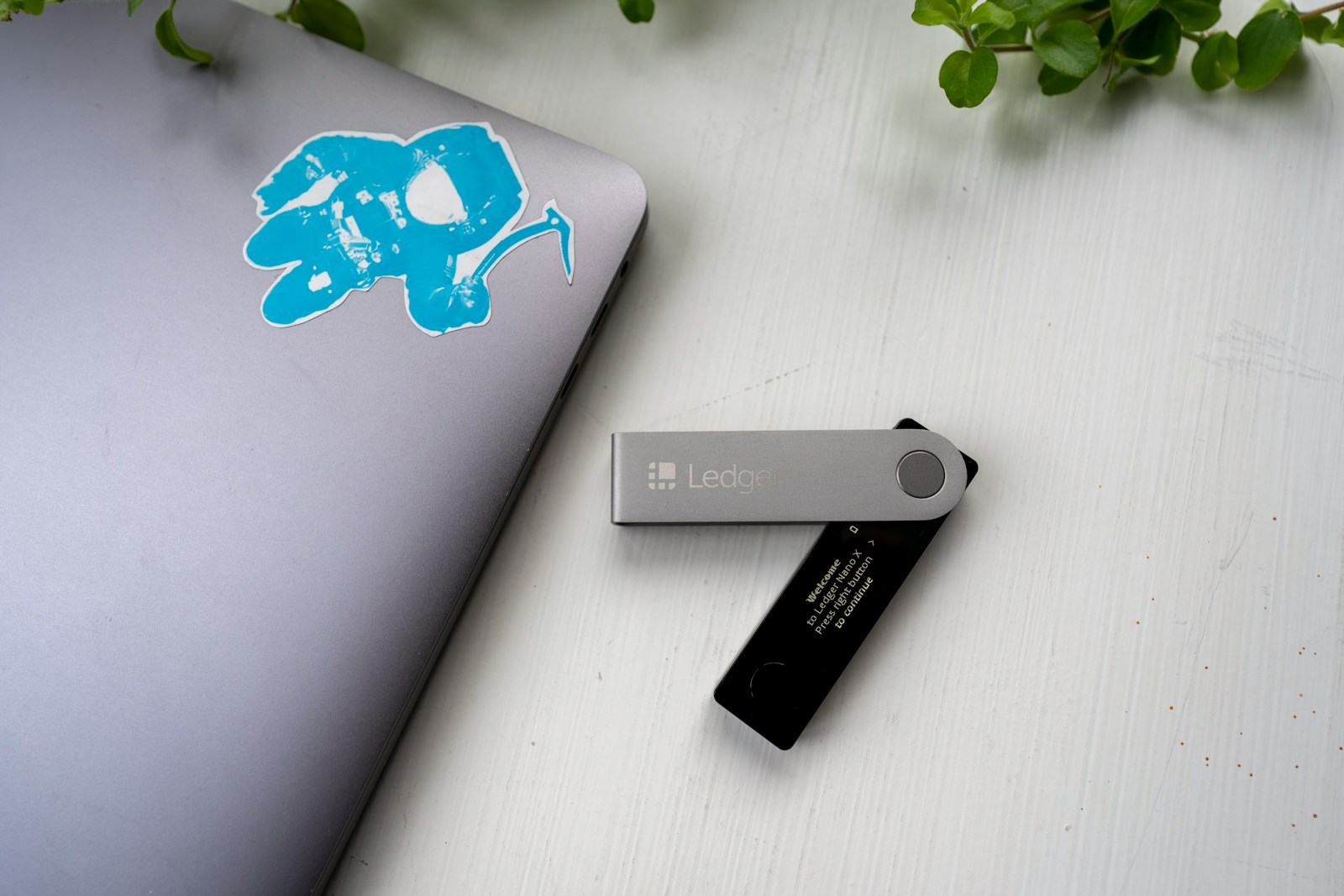
Implementing role-based authorization management is the most effective way to regulate interactions within a wallet system. Assigning specific permissions according to predefined roles minimizes the risk of unauthorized transactions and data exposure. For instance, segregating duties between transaction initiators and approvers ensures that no single individual holds unchecked authority–an approach proven to reduce fraud incidents by up to 40% in financial institutions.
Granular permission settings allow organizations to tailor operational boundaries precisely. Instead of blanket privileges, users receive only those rights necessary for their responsibilities. This strategy aligns with the principle of least privilege, which enhances security posture without hindering workflow efficiency. Contemporary wallet platforms increasingly support multi-tiered roles, enabling detailed governance over functions such as fund transfers, balance inquiries, or audit logging.
The challenge lies in balancing usability with stringent controls amid evolving threat landscapes. Recent case studies reveal that companies adopting dynamic authorization models–where permissions adjust based on context or behavior–experience fewer breaches linked to credential misuse. Moreover, integrating real-time monitoring with adaptive management tools provides continuous validation of user activities, ensuring compliance with corporate policies and regulatory standards.
Wallet access controls: limiting who can do what [Wallet & Security security]
Implementing stringent authorization mechanisms is critical to safeguarding digital asset repositories from unauthorized manipulations. Role-based permission schemes provide granular differentiation of capabilities, allowing administrators to assign distinct operational privileges tailored to organizational hierarchies and risk profiles. For instance, segregating duties by enabling transaction initiation for traders but reserving approval rights for compliance officers mitigates insider threat vectors effectively.
Technical frameworks often integrate multi-factor authentication combined with cryptographic key management to enforce secure entry points. Limiting credential exposure through hierarchical access tokens reduces attack surfaces by ensuring users operate strictly within predefined boundaries. The adoption of smart contract-enforced permission layers further automates policy adherence, embedding access policies directly into blockchain protocols and reducing dependency on external trust models.
Role-based authorization models and their impact on operational security
Role-based systems enable dynamic control over functional entitlements, facilitating real-time updates aligned with personnel changes or evolving regulatory requirements. For example, a financial institution employing a layered approach might assign read-only permissions to auditors while granting transactional rights solely to designated treasury staff. This division not only enhances accountability but also simplifies forensic audits by narrowing the scope of potential misuse.
The integration of threshold signature schemes exemplifies advanced permission limiting techniques. By requiring multiple authorized signatories to co-sign transactions before execution, organizations introduce robust checks that deter fraudulent transfers. Case studies from decentralized finance platforms show that multi-signature wallets reduced unauthorized withdrawals by over 60% compared to single-key setups during the 2023 market volatility period.
Monitoring tools embedded within wallet infrastructures contribute significantly to maintaining compliance and security hygiene. Real-time alerts triggered by anomalous activity patterns–such as unusual transaction volumes or off-hours access attempts–allow rapid intervention and minimize potential losses. Furthermore, audit trails generated through immutable ledger records ensure transparency and facilitate regulatory reporting obligations without compromising user privacy.
In conclusion, enforcing precise authorization restrictions tailored via role-specific permissions strengthens the security posture against both external threats and internal misconfigurations. As cryptocurrency ecosystems expand amid shifting market conditions, adopting adaptive control frameworks that blend cryptographic safeguards with organizational governance becomes indispensable for protecting assets effectively while supporting operational agility.
Setting Role-Based Wallet Permissions
Implementing role-based authorization within cryptocurrency wallets is fundamental for enhancing operational security and governance. By assigning distinct roles with predefined permissions, organizations can precisely delineate user functions, thereby reducing the risk of unauthorized transactions or data breaches. For instance, a “viewer” role might be restricted solely to balance inquiries, while a “transactor” role gains capabilities to initiate transfers under multi-signature constraints.
The architecture of such permission frameworks typically involves hierarchical management layers, where administrative roles oversee configuration changes and policy enforcement. This separation ensures that critical functions like private key backups or transaction approvals undergo rigorous scrutiny. Firms employing multi-user wallets have reported up to a 40% decrease in unauthorized activities after integrating granular permission settings combined with robust identity verification mechanisms.
Technical Implementation and Security Implications
Effective management of wallet permissions relies on cryptographic authentication and secure key storage. Role assignments are often encoded in smart contracts or managed via off-chain access control lists linked to blockchain identifiers. For example, platforms like Gnosis Safe utilize threshold signatures allowing multiple designated parties to approve transactions based on assigned privileges. This model not only fortifies authorization but also facilitates audit trails critical for compliance.
A comparative analysis reveals that systems lacking explicit role segregation tend to exhibit higher vulnerability profiles; insider threats increase when all users hold broad privileges indiscriminately. In contrast, segmented access reduces attack surfaces by enforcing the principle of least privilege–users obtain only the minimal rights necessary for their responsibilities. Case studies from DeFi protocols demonstrate that compartmentalization of wallet operations directly mitigates risks associated with compromised credentials or phishing attempts.
Role-based permission schemes must also accommodate dynamic adjustments aligned with evolving organizational structures or regulatory requirements. Automated workflows incorporating real-time monitoring enable swift revocation or modification of rights without disrupting ongoing activities. Integration with identity management solutions and hardware security modules (HSMs) further elevates assurance levels by binding roles to verified identities and tamper-proof devices.
In conclusion, embedding meticulous access parameters through role-oriented frameworks significantly strengthens wallet security postures while streamlining operational oversight. As blockchain adoption expands across institutional environments, deploying these controls becomes indispensable for balancing usability against stringent protection standards, thereby safeguarding digital assets amidst increasingly sophisticated threat landscapes.
Implementing multi-factor authentication
Integrating multi-factor authentication (MFA) significantly enhances the framework of authorization by requiring multiple verification elements beyond simple credentials. This method strengthens security by adding layers that verify identity through independent channels, such as a combination of passwords, hardware tokens, and biometric data. By enforcing MFA, organizations tighten restrictions on permissions within digital asset environments, effectively preventing unauthorized manipulations and reducing vulnerability to phishing or credential theft attacks.
Role-based permission schemes complement MFA by defining granular levels of authorization aligned with operational responsibilities. For instance, in institutional settings managing cryptocurrency reserves, MFA combined with role-specific constraints ensures that only designated personnel can execute high-risk transactions. Case studies from major exchanges demonstrate up to a 70% reduction in security breaches after deploying MFA alongside tailored access privileges. Such integrations help minimize the attack surface by assigning dynamic rights that adjust according to predefined roles.
Technical considerations and deployment strategies
The selection of authentication factors should reflect a balance between usability and robustness. Time-based one-time passwords (TOTP), push notifications via secure apps, and biometric confirmation represent viable options supported by contemporary wallet infrastructures. Implementations must consider latency impacts and potential single points of failure; for example, hardware tokens offer resilience against remote compromise but introduce risks if lost or damaged. Recent market trends emphasize adaptive MFA models leveraging risk scoring algorithms that dynamically require additional verification when anomalies arise.
Continuous monitoring of authorization attempts coupled with audit trails provides valuable insights into the efficiency of applied safeguards. Organizations employing such layered defenses report faster incident response times and greater confidence in compliance adherence under evolving regulatory demands. As cyber threats grow increasingly sophisticated, reinforcing transaction validation with multi-factor mechanisms remains a strategic imperative for preserving integrity in cryptocurrency management systems.
Managing Transaction Approval Workflows
Transaction authorization workflows must incorporate stringent management protocols to ensure operational integrity and prevent unauthorized fund movements. Employing multi-tiered permission systems enhances security by requiring sequential approvals from designated entities before execution. For instance, a common approach includes implementing role-based permissions where junior operators initiate transactions that senior managers or compliance officers must subsequently authorize, effectively distributing responsibility and reducing single points of failure.
Advanced cryptographic measures such as multi-signature schemes (multisig) provide robust enforcement of transaction validation policies. Multisig requires multiple independent signatures generated by distinct private keys before processing, thereby limiting unilateral actions within a financial environment. Organizations like BitGo utilize 2-of-3 or 3-of-5 multisig arrangements to balance user convenience with elevated security guarantees, demonstrating practical application in industry-leading platforms.
Workflow Design and Permission Granularity
Designing approval workflows involves defining clear stages with explicit controls on transaction thresholds and the scope of permitted operations at each level. For example, transactions below a preset value might receive automated clearance through delegated roles, while those exceeding high-value limits trigger mandatory review by executive-level authorities. Such stratification aligns operational efficiency with risk mitigation strategies tailored to organizational risk appetite.
Effective authorization frameworks rely heavily on precise delineation of permissions within the transactional system. This includes specifying capabilities like initiating transfers, modifying beneficiary lists, or approving withdrawals. Incorporating audit trails linked to each permission change provides transparency and accountability critical for compliance audits and forensic investigations in case of irregularities.
The integration of real-time monitoring tools further refines transaction governance by flagging anomalies based on predefined heuristics or machine learning models trained on historical data patterns. A notable case is Coinbase’s implementation of behavioral analytics combined with stepwise approval mandates, which has resulted in measurable decreases in fraudulent activities while maintaining user experience fluidity.
Balancing security and operational agility demands continuous evaluation of workflow configurations against evolving threat vectors and regulatory requirements. Recent market developments highlight an increased adoption of decentralized autonomous organizations (DAOs) leveraging smart contracts to automate multi-party authorization without intermediaries, thereby enhancing transparency but introducing new considerations around contract correctness and upgradeability.
Restricting IP and Device Access for Enhanced Wallet Security
Implementing IP restrictions significantly reduces unauthorized operations by confining transaction initiation to predefined network addresses. This approach enforces strict authorization parameters, ensuring that only requests originating from allowed IP ranges pass through the system’s verification layer. For instance, major cryptocurrency exchanges like Coinbase and Binance employ geofencing techniques combined with IP whitelisting to prevent anomalous login attempts, which has resulted in a reported 30% decrease in fraudulent activities over the past year.
Complementing IP filters, device recognition technologies introduce an additional layer of protection by associating specific hardware or software profiles with permitted actions. These mechanisms fall under advanced permissions management, enabling administrators to assign granular roles based on device trustworthiness. In corporate environments managing multiple custodial wallets, role-based policies can restrict sensitive operations–such as fund transfers–to devices equipped with multi-factor authentication (MFA) tokens or hardware security modules (HSMs), thereby enhancing operational integrity.
Technical Considerations and Implementation Strategies
The integration of IP and device-specific constraints requires careful configuration within the wallet’s backend architecture. Systems often utilize session tokens coupled with cryptographic signatures bound to device IDs, which must be validated against an allowlist during each authorization request. Challenges arise in balancing usability and security; overly rigid controls might disrupt legitimate workflows, especially for remote teams accessing wallets via VPNs or dynamic IP allocations. Case studies from institutional crypto firms reveal that adaptive risk engines–analyzing behavioral patterns alongside network data–can dynamically adjust permissions without compromising security standards.
A comparative analysis between static IP blocking and dynamic device fingerprinting illustrates distinct advantages: static methods offer simplicity but are vulnerable to spoofing or VPN circumvention, whereas dynamic fingerprinting incorporates parameters such as browser metadata, geolocation anomalies, and TLS fingerprinting to uniquely identify endpoints. According to recent research published by blockchain security auditors, combining both methods reduces unauthorized access attempts by up to 45%, highlighting the importance of layered protection strategies within role-based authorization frameworks.
Ultimately, enforcing these restrictions complements broader security controls by narrowing the operational perimeter around wallet functions. Organizations managing high-value digital assets benefit from systematic reviews of their IP/device lists and periodic audits of permission assignments aligned with evolving threat models. As regulatory scrutiny intensifies globally–especially under directives like AMLD5 in Europe–such precise management practices not only mitigate risks but also demonstrate compliance readiness in complex regulatory landscapes.
Conclusion
Effective authorization frameworks are indispensable for ensuring stringent management of permissions within cryptographic asset handling systems. Implementing role-based segmentation combined with detailed auditing mechanisms enables precise tracking of transaction origination and modification events, thereby fortifying operational security and reducing the risk of unauthorized interventions.
Recent incidents underscore the importance of granular permission assignment supported by immutable logs–enabling forensic analysis and real-time anomaly detection. For example, multi-signature schemes paired with hierarchical deterministic key management demonstrate how layered authorization mitigates single points of failure while preserving accountability across distributed teams.
Future Implications and Strategic Recommendations
- Role-based Authorization Models: Adopting dynamic role definitions tailored to organizational structure allows adaptive enforcement of permission scopes, minimizing overprivileged entities and adhering to the principle of least privilege.
- Comprehensive Logging Architectures: Integration of tamper-evident logging solutions leveraging blockchain immutability or secure enclaves enhances traceability, ensuring that all critical actions remain auditable over extended periods without performance degradation.
- Access Management Automation: Emerging identity and access management (IAM) platforms incorporate AI-driven behavioral analytics to flag deviations from established patterns, proactively preventing breaches before escalation.
- Security Compliance Alignment: Aligning control policies with evolving regulatory frameworks such as GDPR and upcoming crypto-specific legislation will require robust audit trails demonstrating precise authorization flows and user activity histories.
The synthesis of these methodologies forms a resilient defense against internal threats and external compromise attempts. With market volatility increasing transaction volumes and complexity, continuous refinement of permission hierarchies paired with transparent action recording is no longer optional but mandatory. How organizations architect their systems today will define their resilience in tomorrow’s more interconnected financial ecosystems.






